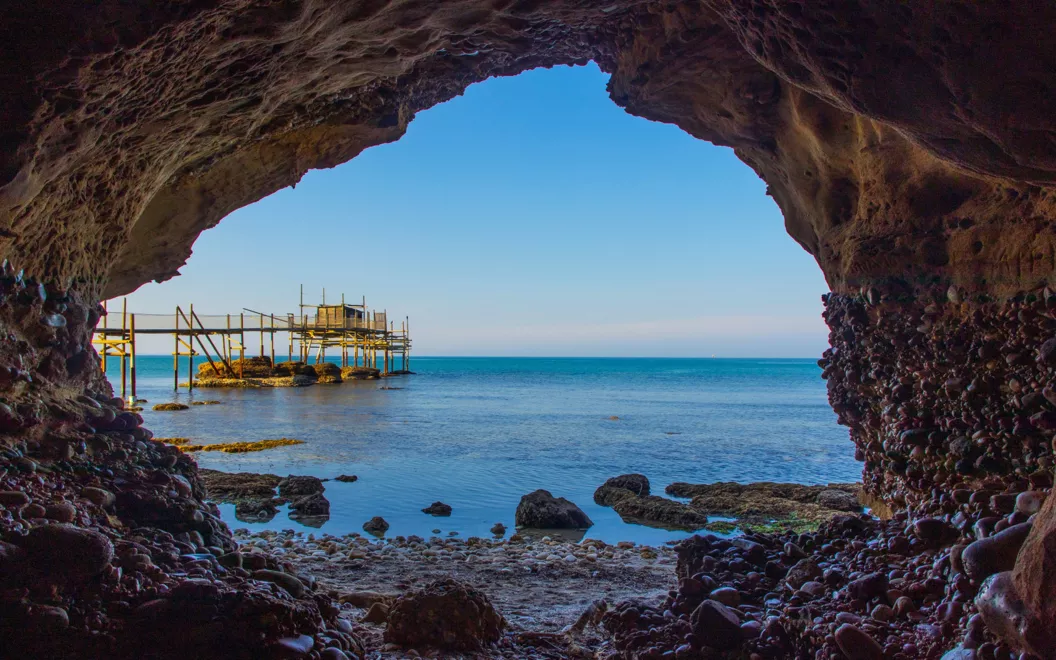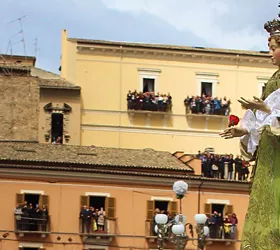Third stage of the Giro d'Italia 2023: from Vasto to Melfi, passing through Termoli
3 minutes
The fifteenth-century Castello Caldoresco, on the promontory overlooking the coast, is the evocative setting for the start of the third stage of the Giro d'Italia, on Monday 8 May 2023, in the heart of Vasto, a small town to be discovered, strategically positioned on the Golfo d'Oro.
The village was rebuilt as a stronghold in the Middle Ages, but has ancient origins that date back to the 12th century BC, when legend tells that it was founded by the Achaean hero Diomedes. It is a little treasure chest of many cultural 'delights'. An imposing structure overlooking the sea, we are welcomed by the Palazzo D'Avalos, which today houses an archaeological museum, with its splendid garden. A few steps away is the Cathedral, named after St Joseph, with its fourteenth-century facade, the only vestige of medieval origins.
Visitors to Vasto must see the extraordinary viewpoint of the Loggia Amblingh, a scenic road that runs along the outline of the old town, and your gaze will wander over the hills, then down to the sea and the magnificent beaches of the Gulf, which are populated by the characteristic trebuchets that dot the cliffs.
The climate favours the cultivation of the vineyards, which have obtained the IGT recognition 'del Vastese o Histonium' for the production of red and white wines, ranging from brut to passito, which pleasantly accompany the dishes of typical cuisine, linked both to the country tradition and to marine life, in which we cannot fail to mention the delicious vastese-style brodetto (broth). Among the exquisite local dishes, you can try lobster, snapper, sea bream, sea bass and many other varieties of fish that populate the marine environment, in addition to fresh pasta seasoned with succulent sauces and with the healthy olive oil produced on the region's hills.
In the direction of the end point, we cross the Molise, reaching Termoli, the only port of the Region, which welcomes us with its characteristic colourful houses, situated close together between the powerful walls overlooking the sea. This typical fishing village, known for its excellent seafaring cuisine, also offers pleasant cultural surprises and fascinates visitors with its Swabian Castle, from the Norman era, which appears as though suspended between land and sea, or the Cathedral that dates back to 1037, a beautiful example of Romanesque-Apulian style, and with many impressive points of interest with unique and spectacular views of the splendid panorama.
Here, too, the sea is a bright blue that enchants visitors, on a coastline that extends hospitably for more than 10 kilometres, with its pristine beaches.
Leaving Termoli, we enter Apulia, to finally arrive in Melfi, Basilicata, which is famous for having been the first capital of the kingdom of the Normans in southern Italy. Its origins are lost in the history of the times, however. Dauni and Lucani were among the first to inhabit it, then there were the Greeks, the Romans, the Byzantines, the Lombards, the Swabians, the Angevins and the Aragonese. Emperor Federico II established his summer residence here and proclaimed the Constitutions that regulated life in the Kingdom of Sicily from this castle. Also dating back to the Norman era is the Cathedral of Santa Maria Assunta, of which only the bell tower remains, in Romanesque style.
The stage podium
Chef Enrico Croatti's 'Scapece alla vastese' from Moebius to savour Abruzzo
Scapece alla vastese is a traditional Abruzzo food and wine recipe, which can also be enjoyed in a more modern way thanks to its timeless ingredients.






